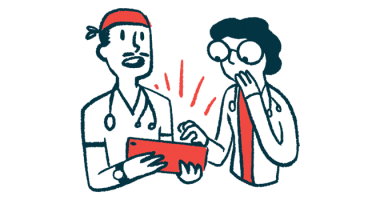Why I gave up high-intensity exercise to manage my AHP
Once an avid runner, a columnist has had to adjust her lifestyle due to porphyria

I used to be a distance runner. More accurately, I used to be a runner of a very defined distance. For years, I tried completing marathon training schedules, only to top off at about 16 or 17 miles. I could build endurance and strength, but I always seemed to hit a wall.
Muscle weakness, stomach pain, nausea, and heartburn plagued me on a daily basis. After long runs, my abdomen swelled, distending like I was in the second trimester of pregnancy. I was tired all the time, and no amount of coffee helped. These symptoms not only became normalized after a while, they became obstacles to overcome, battles to win.
I did what any competitive athlete would do: I pushed through my pain. I changed my diet, consulted with my physical therapist, and built up my core strength. Running isn’t supposed to feel good, I told myself each time I pulled away from my running group, slowing my pace to a walk. Where pavement met dirt, I clutched my stomach and kept moving forward along the trail’s edge.
I wasn’t enough, and I wasn’t doing enough. Never once did I think high-intensity exercise was too stressful for my body.
Giving up running
Before receiving my acute hepatic porphyria (AHP) diagnosis, I was hospitalized several times over a period of six months. I heard again and again that nothing was wrong with me. Doctors told me to get back out there and live my life with no precautions.
After a two-week stint in the hospital, I was optimistic that whatever illness I had was temporary and wouldn’t interfere with my training. I visited my physical therapist, who examined my aching legs. The pain was bone deep, and my weakness seemed to come and go. She said my muscles had atrophied from spending so long in a hospital bed.
“I want you to take it slow,” she said. Also a runner, she knew better than anyone the deep disappointment of an injury disrupting my precious training schedule. “For-real slow, not your version of slow,” she said with a wink.
I started with short intervals of walking and running for 10 minutes at a time, unconcerned with mileage. The first day of my new training plan, I left my condo, heading east into the rising sun. My body felt different, depleted somehow. Like the physical trauma it went through had done some real damage. After a couple blocks, I braced myself against a neighbor’s retaining wall, gasping for breaths between sobs.
Even taking it slow proved too much for my body. In the back of my mind, I wondered for the first time if the doctors were wrong.
Running with chronic illness
I love running. I miss it every day. The challenge of the distance, the structure of a training plan, the camaraderie of my local running community, and the sweet taste of a recovery protein smoothie. Being a runner was my identity.
A recent article in Trail Runner Magazine interviews athletes with chronic illness. It’s a piece I would’ve scrolled past had it not been sent by a dear friend, who’s supported me through my disease acceptance process. The story is too personal. I’ve felt pride in ignoring my body’s cues. I’ve overcompensated for missed training days spent in bed.
I’ve often wondered who’s meant to read these pieces. Are they for people with illness, to prove they can do more, or are they intended to motivate able-bodied people not to be lazy? Articles like this seem to glorify the battle between body and mind, mistaking dissociation for strength. They tell an inspiring, ableist story of overcoming illness to achieve impossible goals.
One athlete recounts a particularly difficult trail race, when her body told her to stop and she wondered, “Is this just a sucky day of symptoms that I can slog on through? Or is this a sign that something is dangerously wrong?” I’ve been there, trying to manage a disease and actively compete. The same woman later admits many people with her disease can’t compete the way she can. That is a message I truly appreciate.
I have friends with AHP who can run long distances, and others who can’t exercise at all. This was confusing to me at first. I had to learn what AHP meant for me specifically, and that took time. In the six years I’ve been diagnosed with AHP, I’ve learned there are seasons that allow me to do more. And honestly, every day is different.
I used to think I could find my limit by pushing myself until I hit it. Now I know that the gentler I can be on my body, the more I have to give to myself and my family.
Note: Porphyria News is strictly a news and information website about the disease. It does not provide medical advice, diagnosis, or treatment. This content is not intended to be a substitute for professional medical advice, diagnosis, or treatment. Always seek the advice of your physician or other qualified health provider with any questions you may have regarding a medical condition. Never disregard professional medical advice or delay in seeking it because of something you have read on this website. The opinions expressed in this column are not those of Porphyria News or its parent company, BioNews, and are intended to spark discussion about issues pertaining to porphyria.








Comments